Do you know the search engine has robots? They are not robots in actuality, they are imaginary. We commonly know them as crawlers. They are spread all over the internet web. They are posted for a certain task of detecting each and every update on every website available on the internet. They are responsible for indexing the content on the search engine. They can be handled on websites by Robots Header tags. In this article, I am going to tell you how you can enable or disable Robot Header tags on your Blogger blog.
Crawlers can be gestured by Header tags on a website. Suppose you allow them for pages on your website that means you are showing a green signal to crawlers to scan the pages on your website. Inversely if you disable them they do not crawl pages on your website. You can handle them separately for the homepage, archives, posts, and pages on Blogger. I will tell you what is the best setting for the homepage, archives, posts, and pages for your blog further in this article so that your site will become easily crawlable. Let’s know first what are the different types of Header tags and the purpose of using them.
Types of Robots Header tags
In the Bloggers header tags option, we can see the following tags to enable and disable. Let’s know about each of them:
all: If you set this tag, crawlers are not bound by any problem. They can easily crawl and index your content.
noindex: Some blogs are not for public notice. If you don’t share the URL of your personal blog with anybody, chances are people will come to it from search results. In some cases, you can use the noindex tag to prevent search engines from indexing the pages.
nofollow: Nofollow and dofollow tags are for outbound links. Dofollow is the default tag for all outbound links. That means search engines can sneak up on the pages you linked to. If you are not looking for search bots to look through your links, the nofollow tag will help you.
none: noindex and nofollow both tags show the same features in some conditions. The crawlers will not index your pages and will not go through the links.
Noarchive: You have observed a cached label with most of the website links on SERPs. It shows the search engine has collected a copy of your site into their server to display in case it goes down. That said, the noarchive tag help to turn off the cached version in search pages.
nosnippet: The group of snippet in search results helps people to find what is the webpage about. If you want to keep the content visible, you can turn this header tag on.
noodp: Open Directory Project or Dmoz is a directory of websites that is man-made. Sometimes search engine collects information from there also. If you want to turn it off, you can turn this tag off.
notranslate: If you want to disable the translation on your website, then by using notranslate tag, you turn translation off.
noimageindex: If you give permission to Google to index the images on your website then people will steal them and use them on their website. To prevent this, you can keep the images deindexed using the noimageindex tag.
unavailable_after: In Blogger, you get a field right to this tag. So, the webpage will be deindexed after this time.
As you can see there are 10 different robots header tags. Now I am going to tell you what Robots Header tags you should keep enabled on your website.
How to set up Robots Header tags on Blogger?
If your website is on Blogger, this article is very important for you. RHT affects neither the ranking nor the traffic of the website. It is just like a signal through which you can correct the visibility of your website on the search engine.
- First, go to blogger.com and sign in to your account. Select the blog in the list, on which you want to modify the Robots Header tags.
- Now go to Settings of the blog, scroll down, and find the Crawlers and Indexing settings.

- Enable Custom robots.txt and Custom robots header tags under Crawlers and indexing.
After turning the Robots Header tags on, you will be able to make changes in Home page tags, Archive and search page tags, and Post and page tags. Let’s see how should be your tags looks like:
Home page tags
Now below you can see three new tag options. Home page tags, Archives and Search page tags, and Post and Pages tags. Now we are going to make some changes to them.
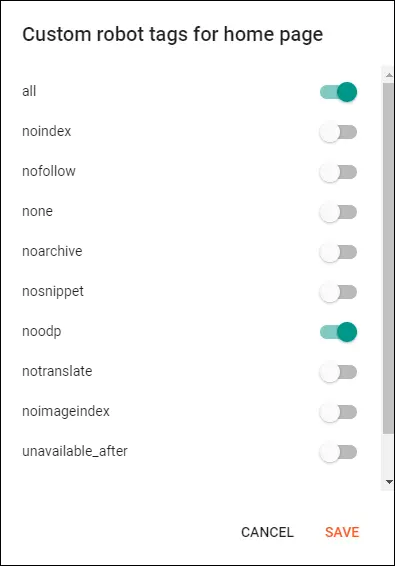
Home page tags are used when you want to index your Home page in Google search. If you want to index your Home page, just enable all and noodp. It will allow crawlers to crawl and index your Home page in Google search.
Archives and Search Page tags
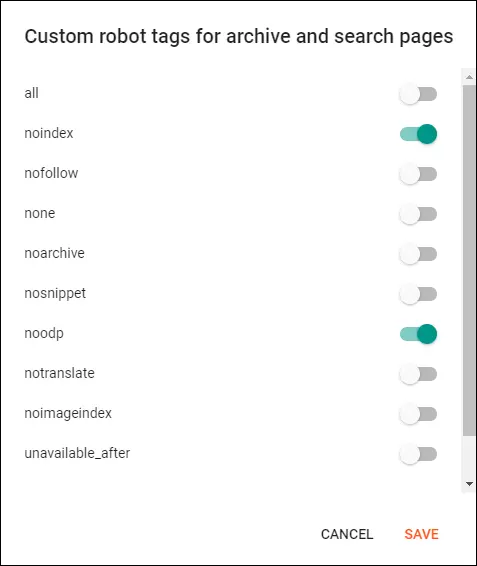
Archives and search page tags are use when you want to index the URL generated after searching on the blog, you have to enable this option. Let see the example of the URL –
I have a blog that’s name is https://techraazz.blogspot.com/. I searched blog word on it by using the search bar. So the URL became like https://techraazz.blogspot.com/search?q=blog this.
So If you want to allow this URL to index, you can do it by enabling all options in the Archives and Search page tags. And if you don’t want to index it, leave it as it appears in the image.
Posts and Pages tags
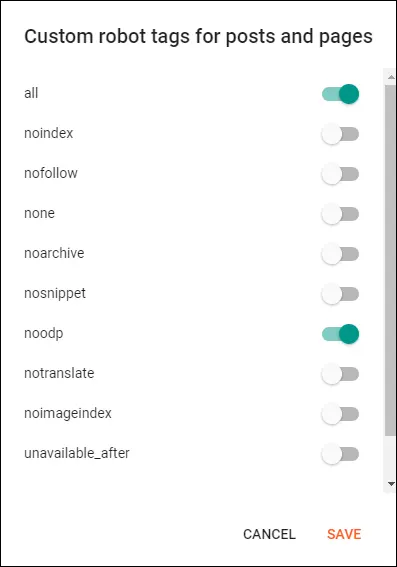
Now you have to enable this because without enabling it, your posts will not appear in the search results. Then how do your rank? To index your post and pages in search results you have to enable all and noodp options as shown in the image.
- Just follow the same settings displayed in the image and hit the “Save” changes button.
Note – We can set this up for the homepage, archive pages, and post pages also. Go ahead and set this setting first.
Also read | How to create privacy policy page?
Conclusion
Custom Robots Header tags are so helpful in indexing your site on search engine. Blogger provides special Crawlers and indexing settings that allow users to make changes as they want their site on search results. My suggestion for you is do not even touch these settings if you do not know what exactly it is for. For example, if you enable noindex somewhere it will pull your website off from search engine results. By following this article your homepage, posts and pages will become crawlable and indexed in the search result. So the case is sensitive do not do anything stupid even by mistake.
If you are going through some problems then do not hesitate to contact me. If you want help in blogging on Blogger just like this article then keep visiting our blog. Thanks for reading.

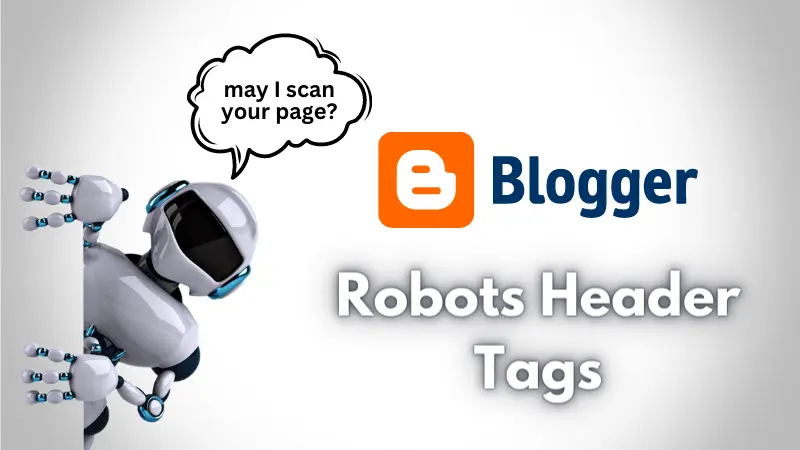
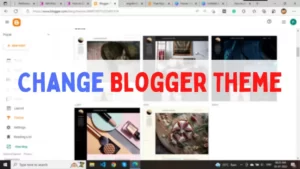
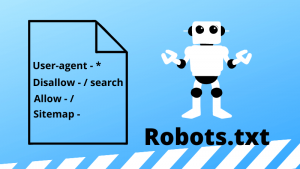
Thanks For Sharing this......
Nice post love to see more
Thanks for sharing your info. I truly appreciate your efforts and I am waiting for your
next write ups thank you once again.
I didn’t know thank you for sharing this
This is the best blog post I have ever read on the internet.
Hello, your post is great and informative about enabling custom robots
Hello, your post is great and informative about enabling custom robots
dear blogging dept, I genuinely appreciate your efforts.
very helpful content
Thanks for this post